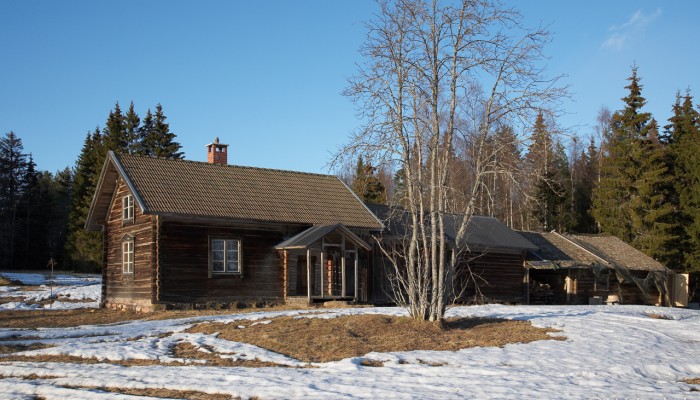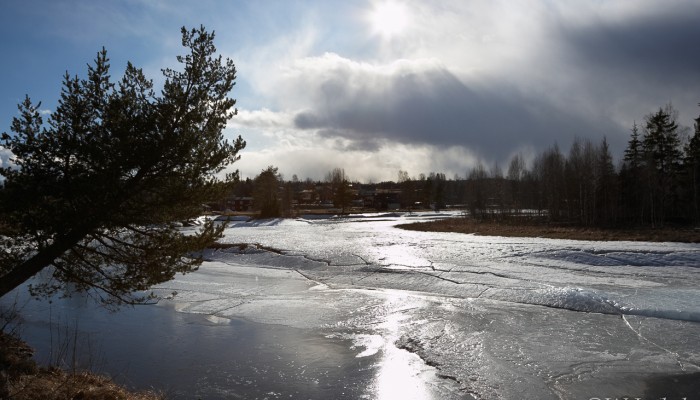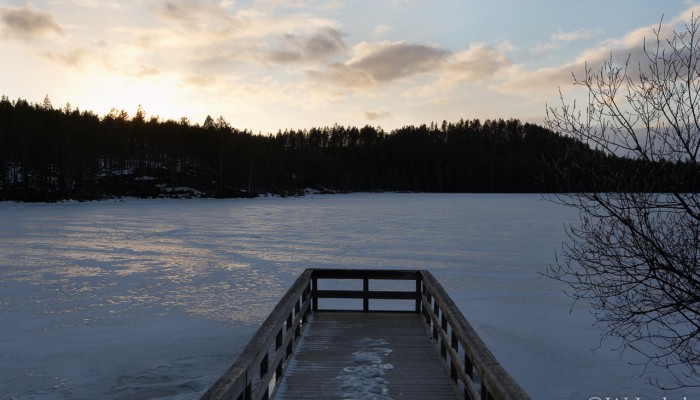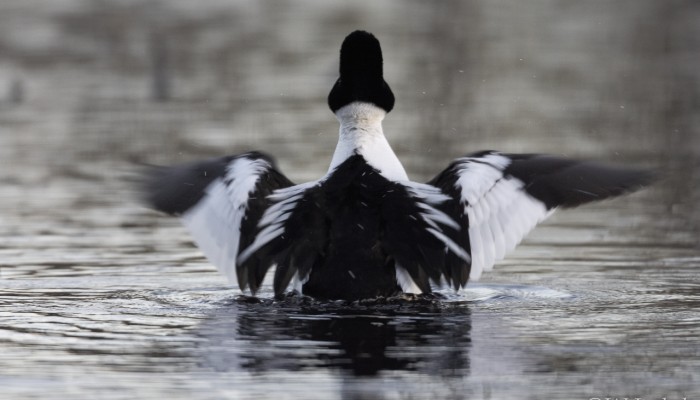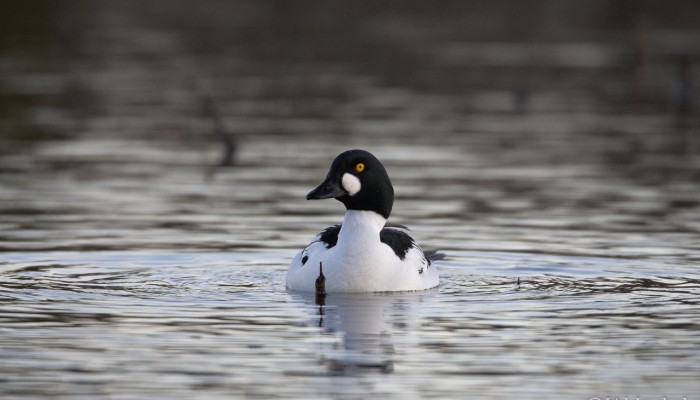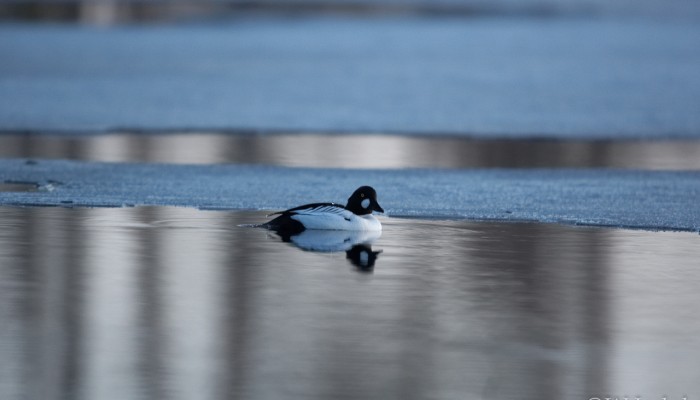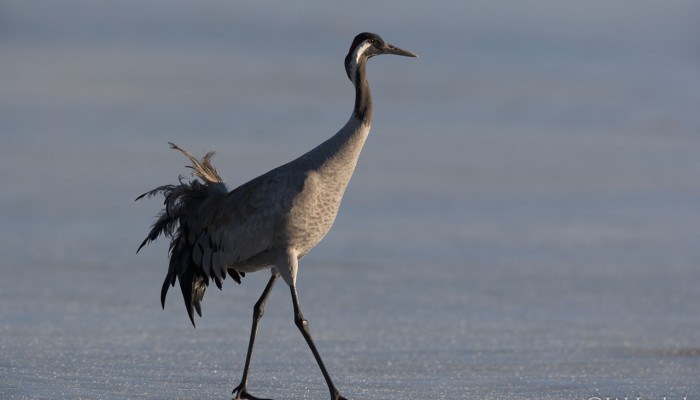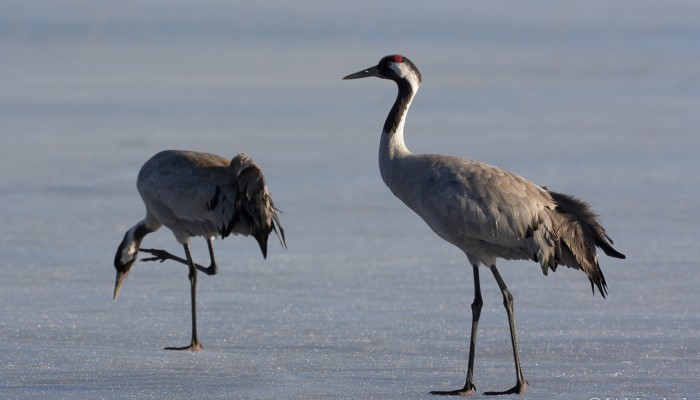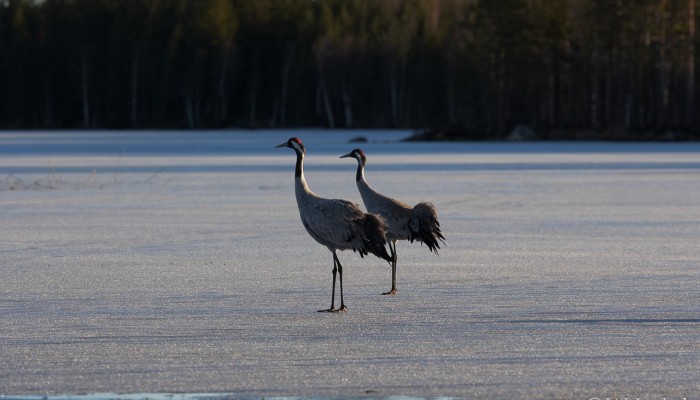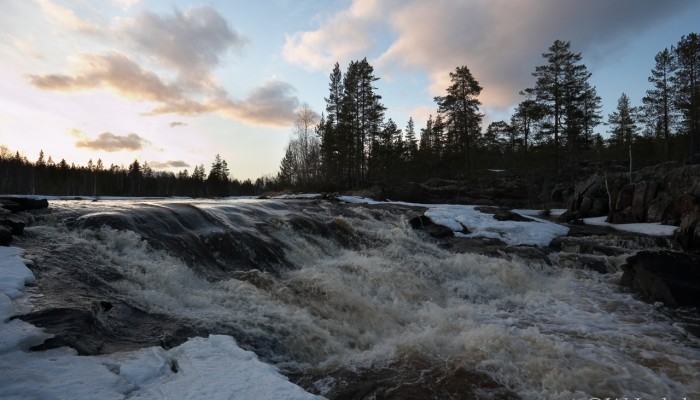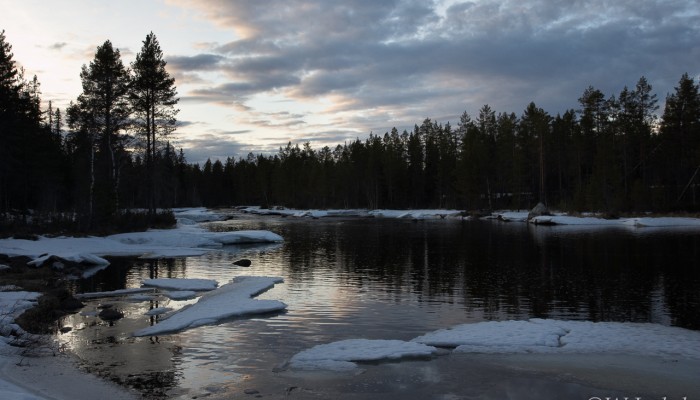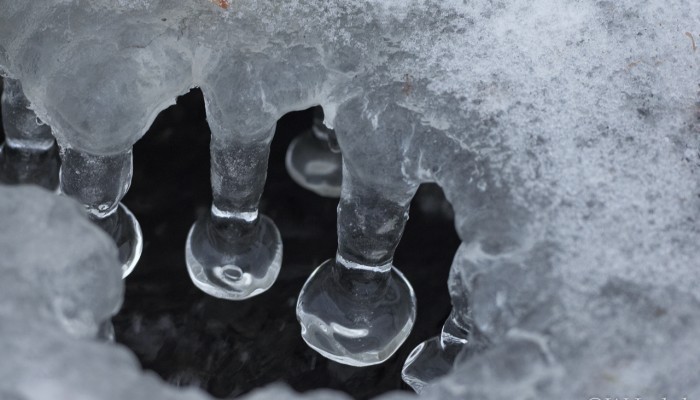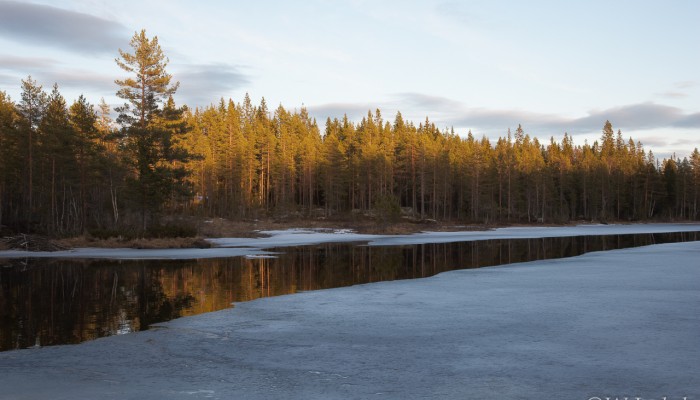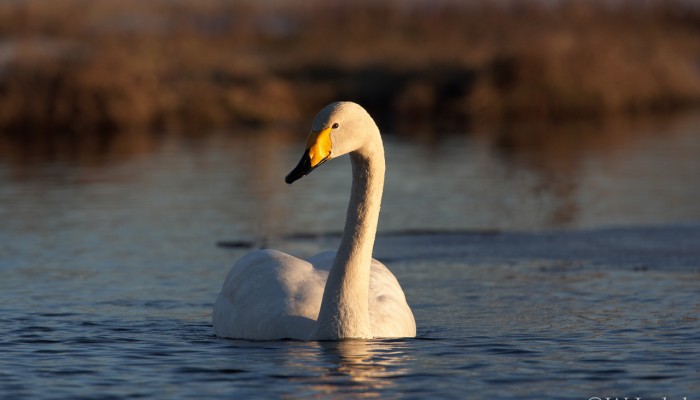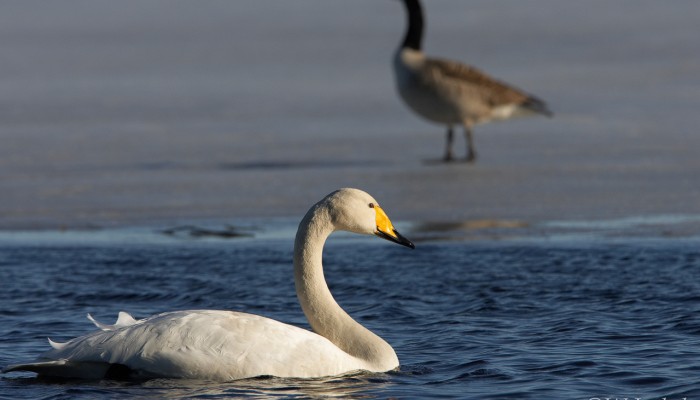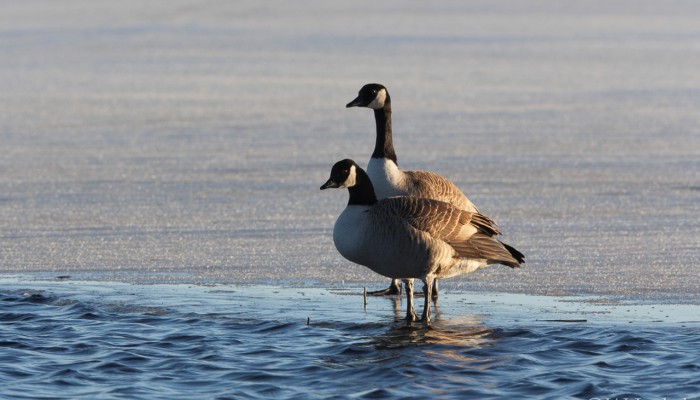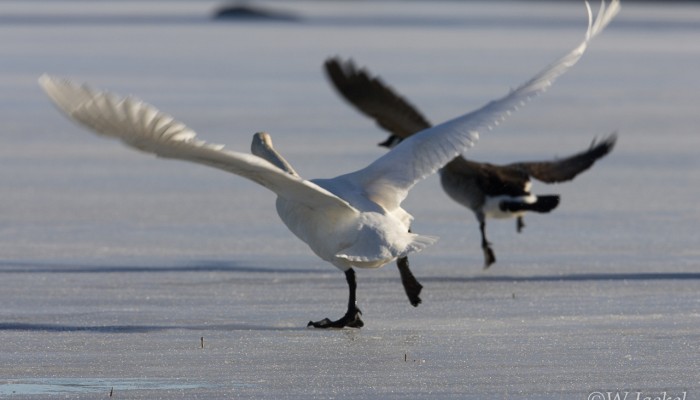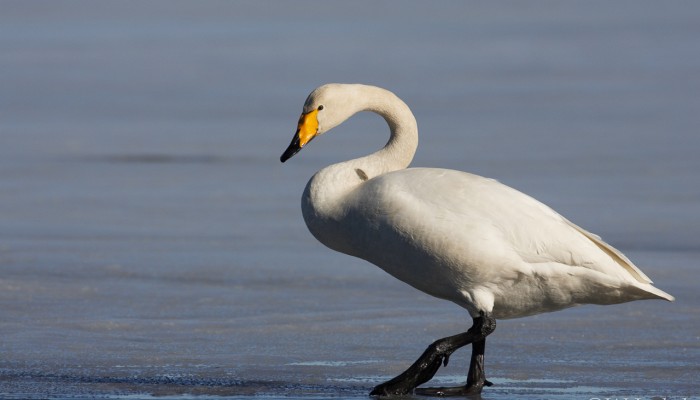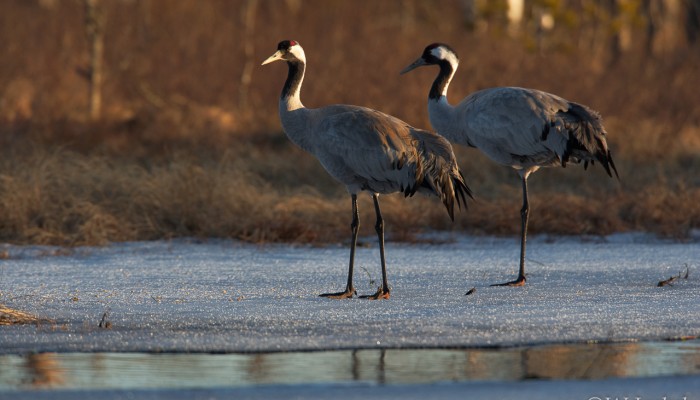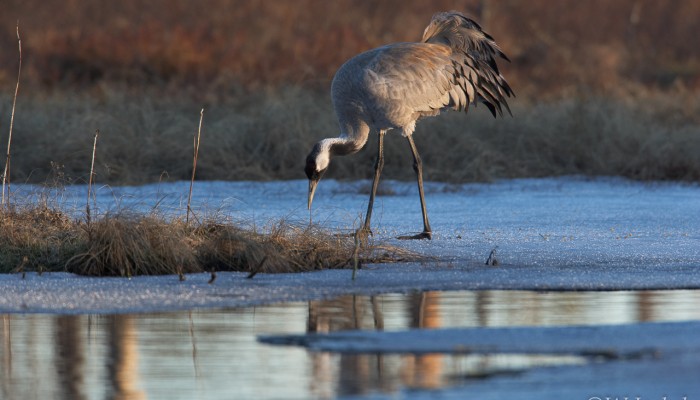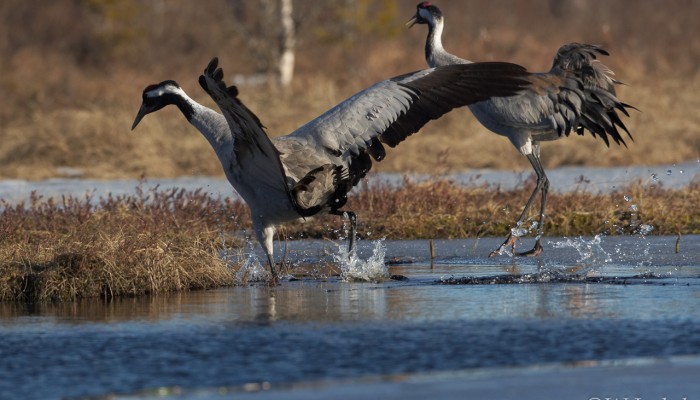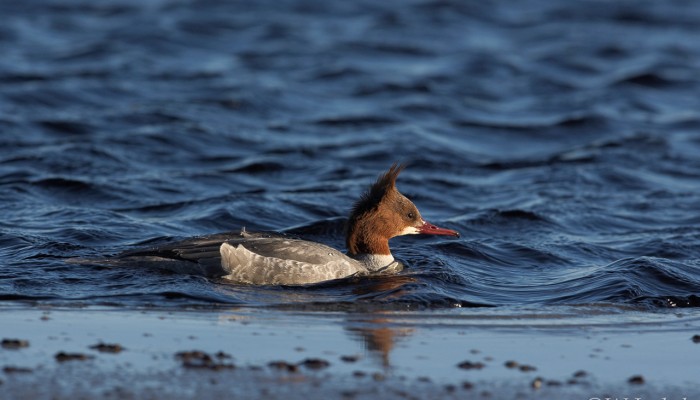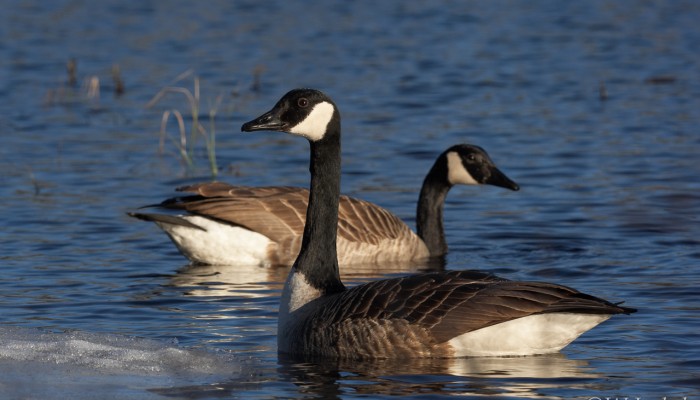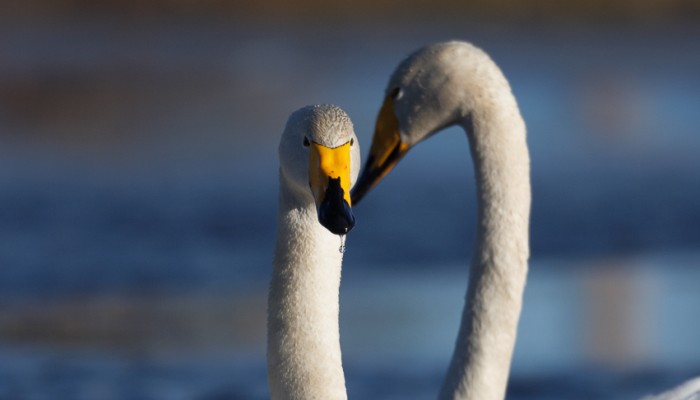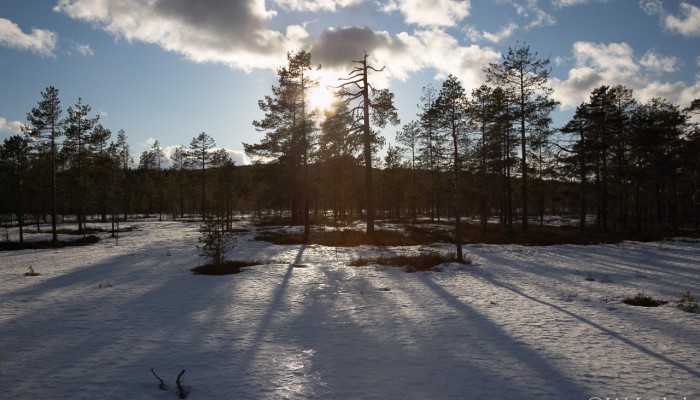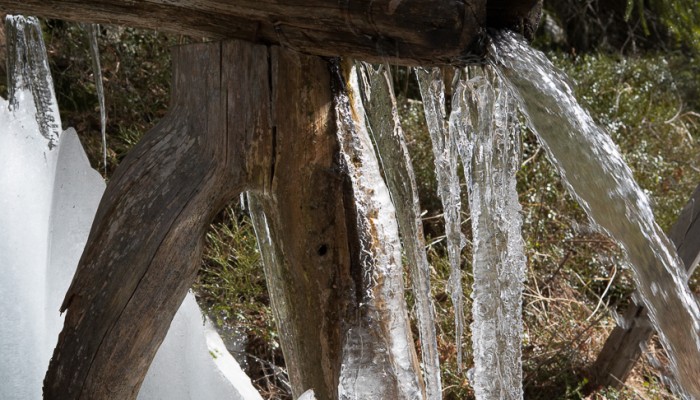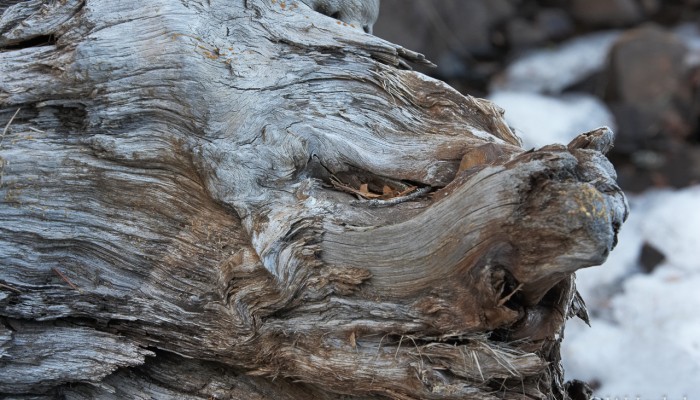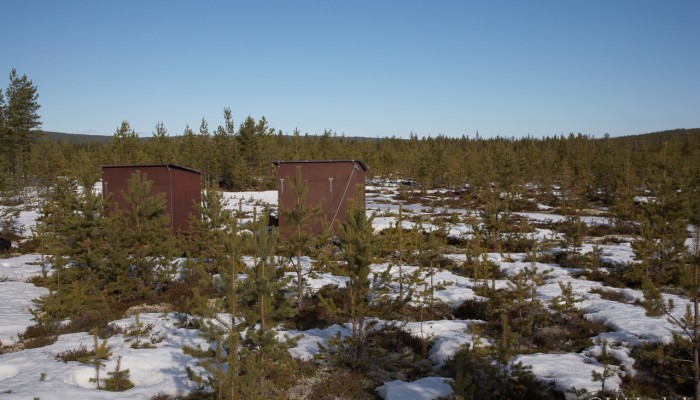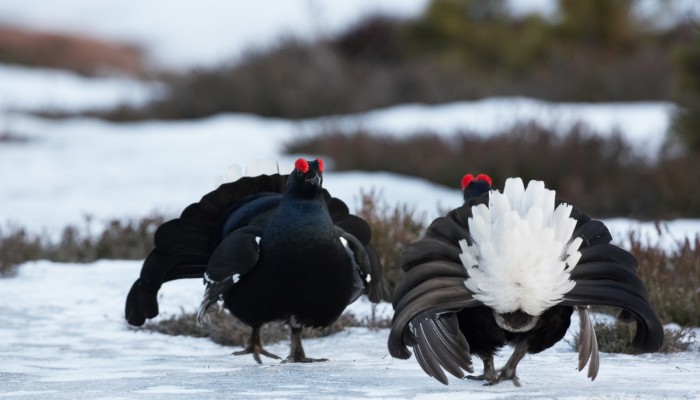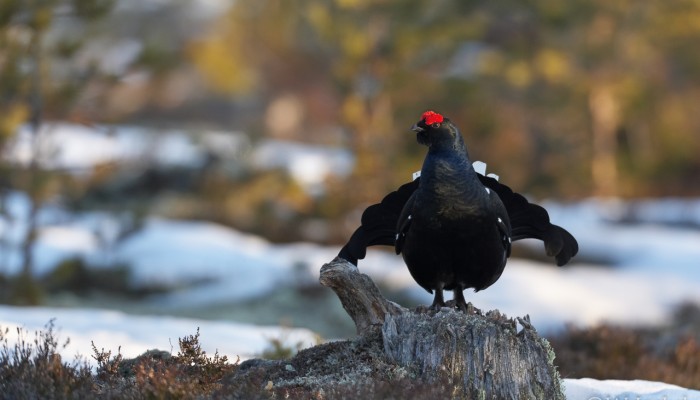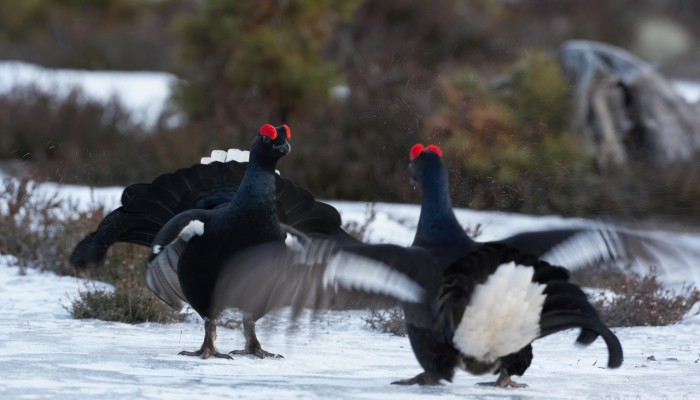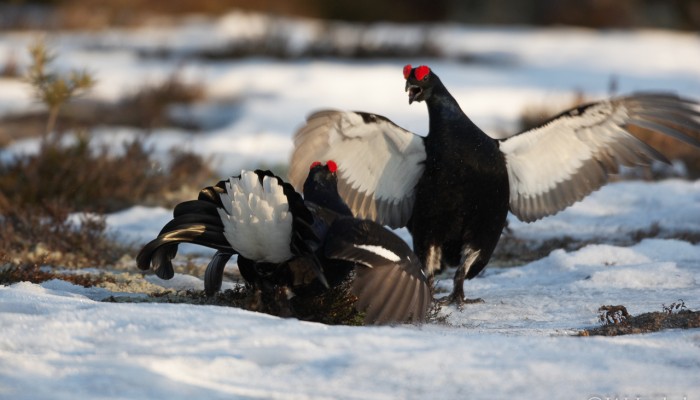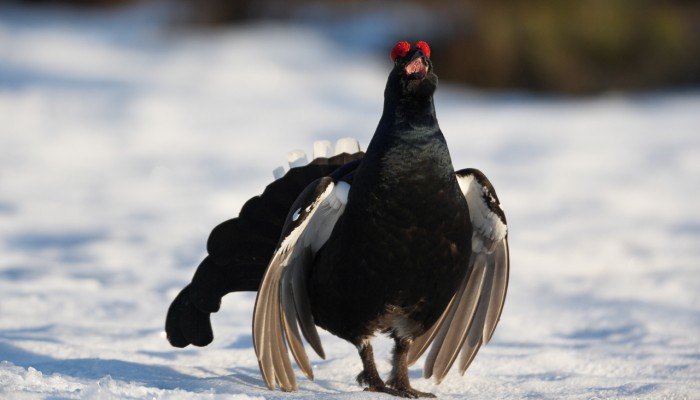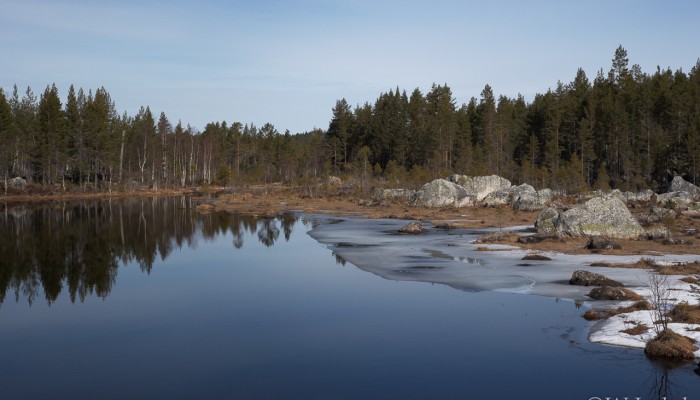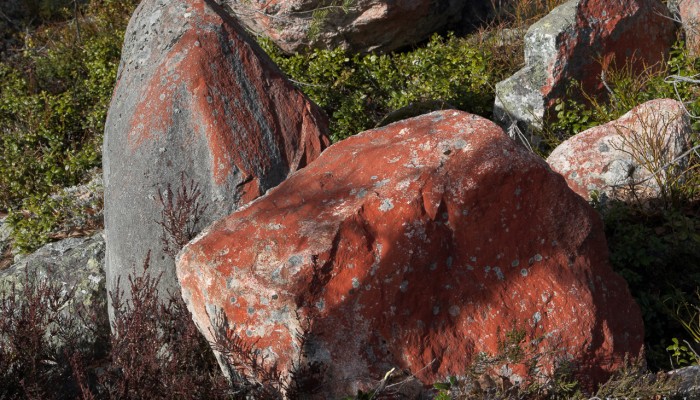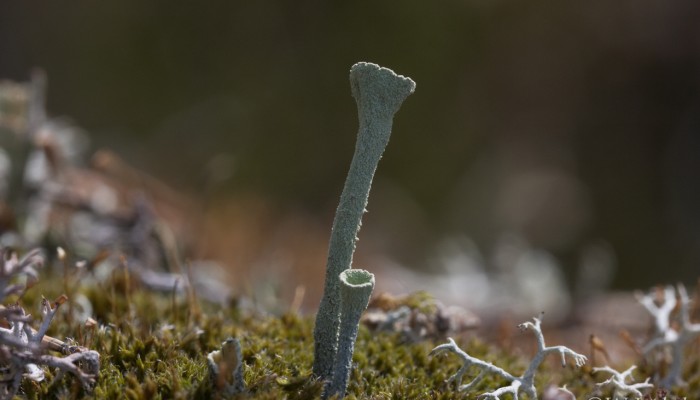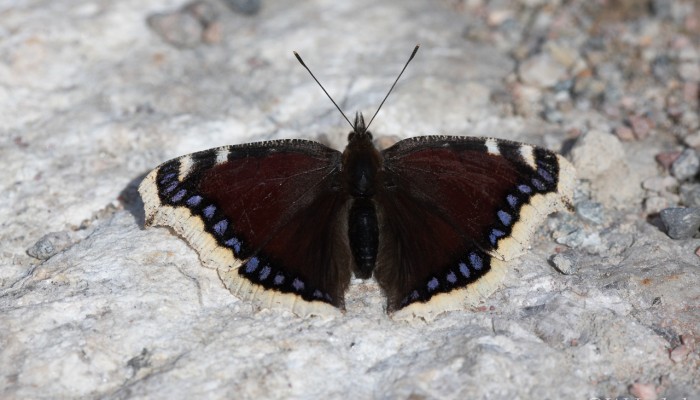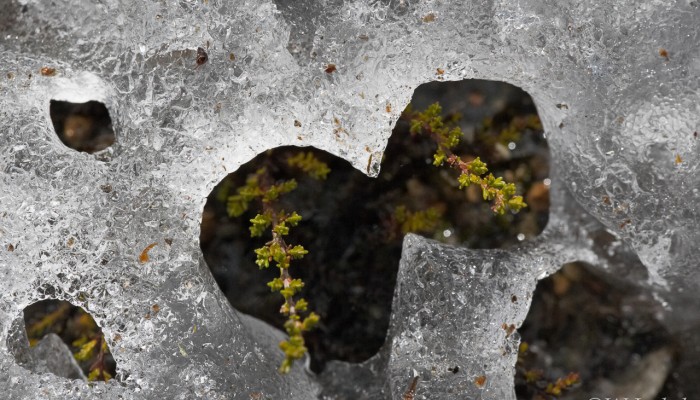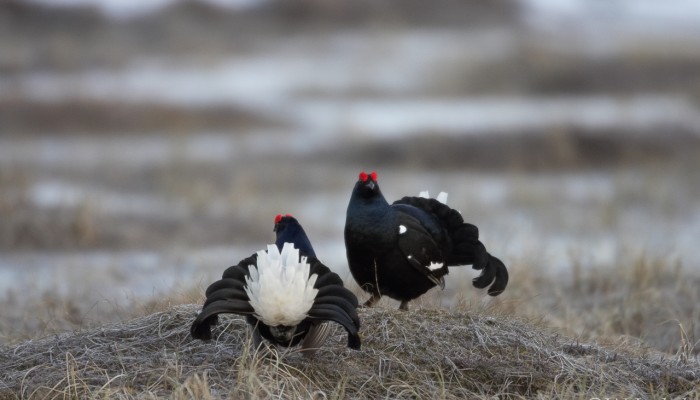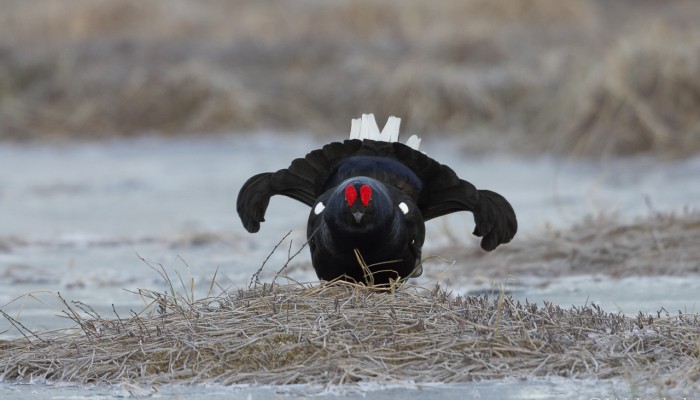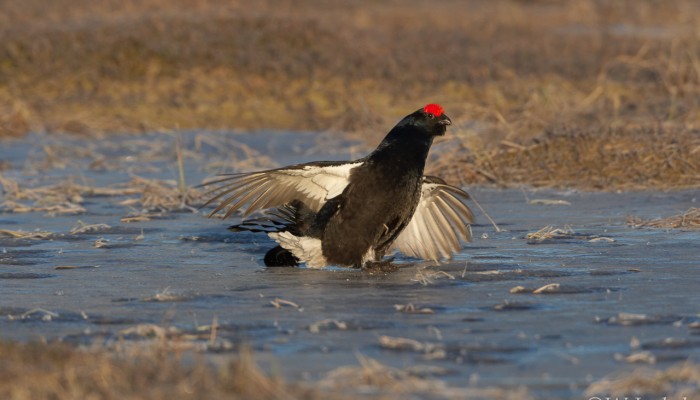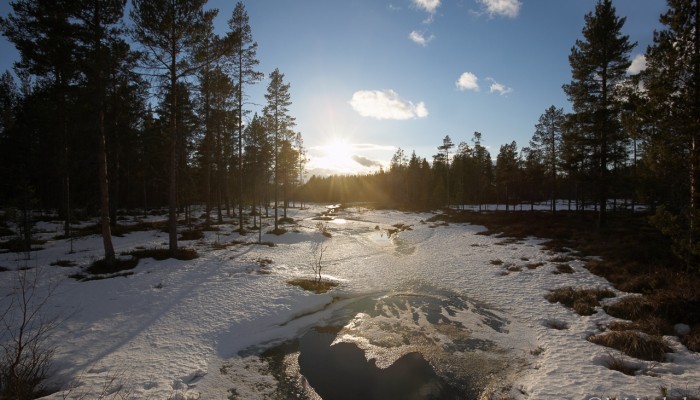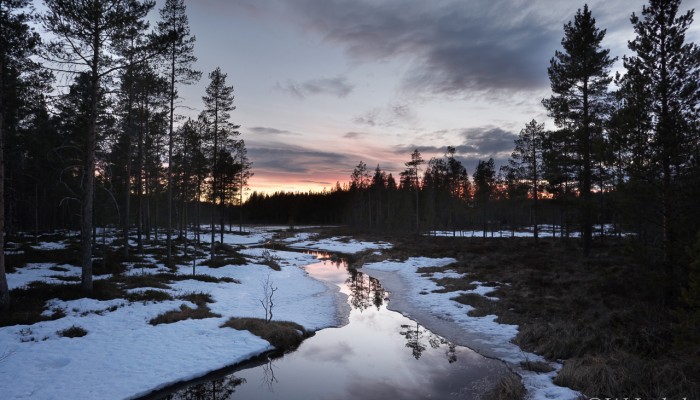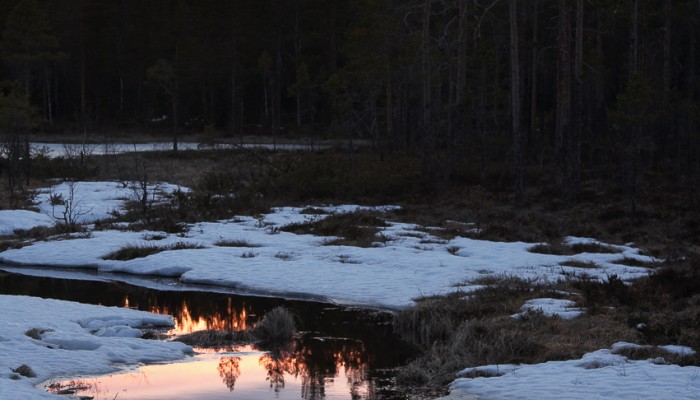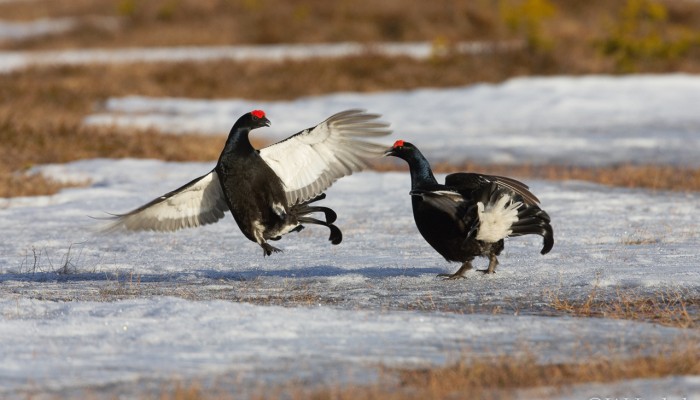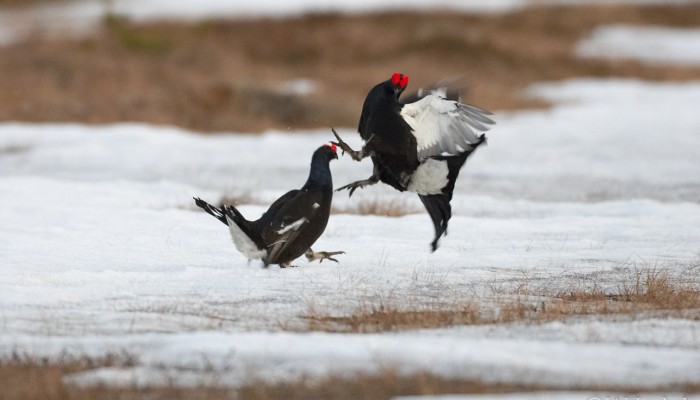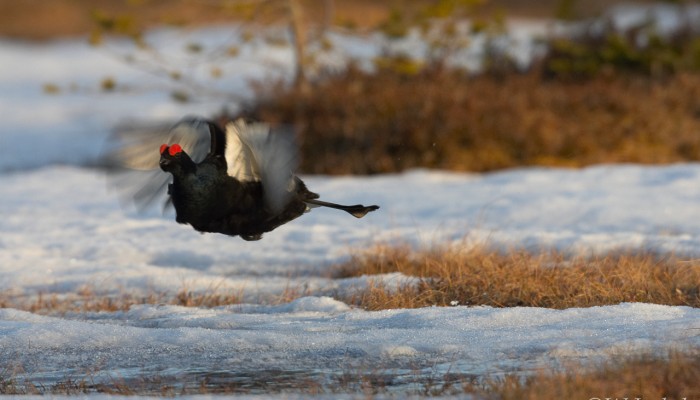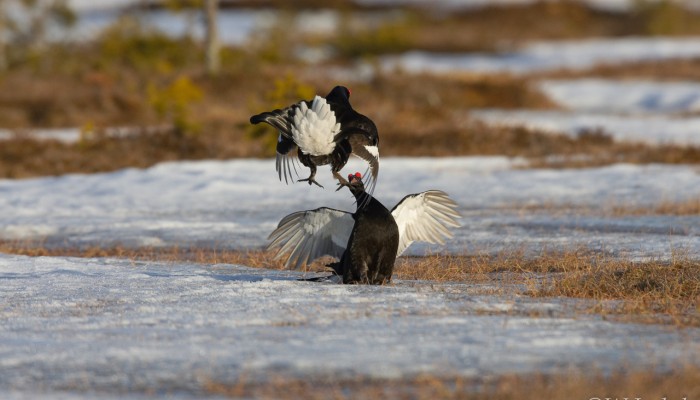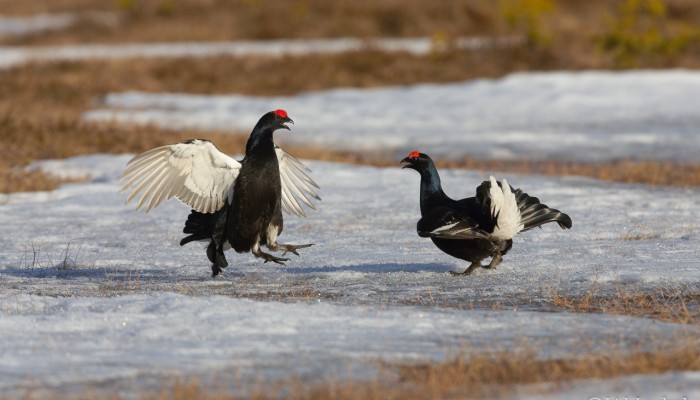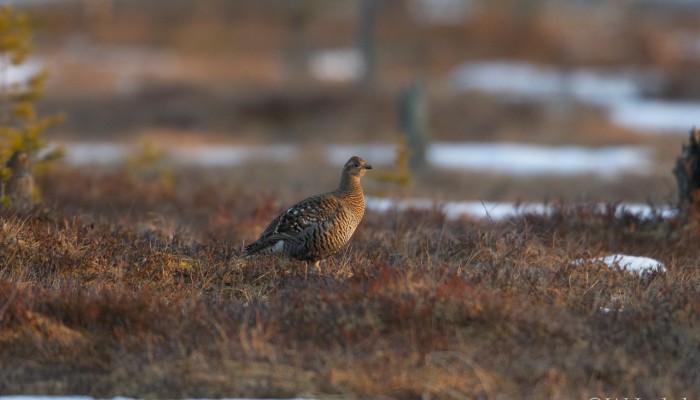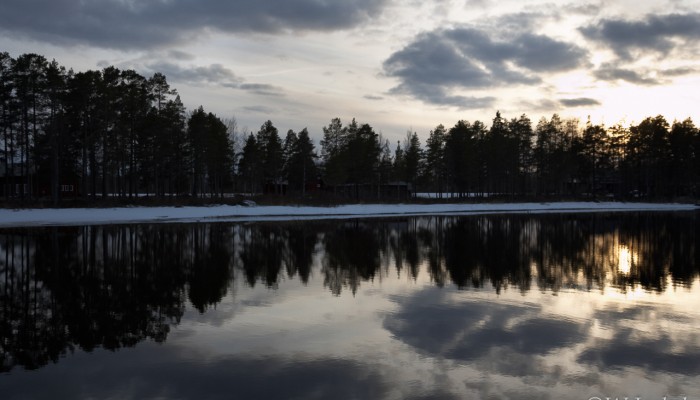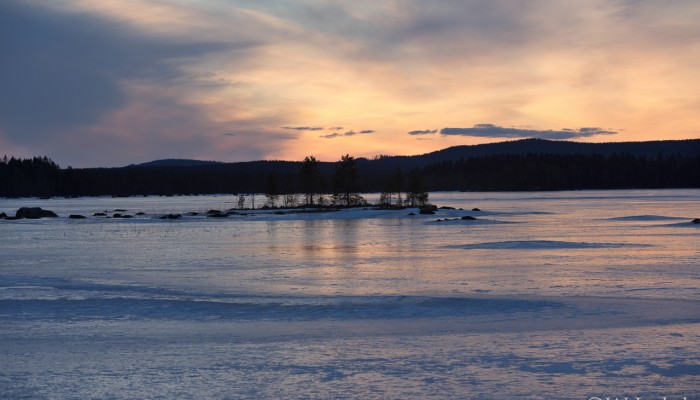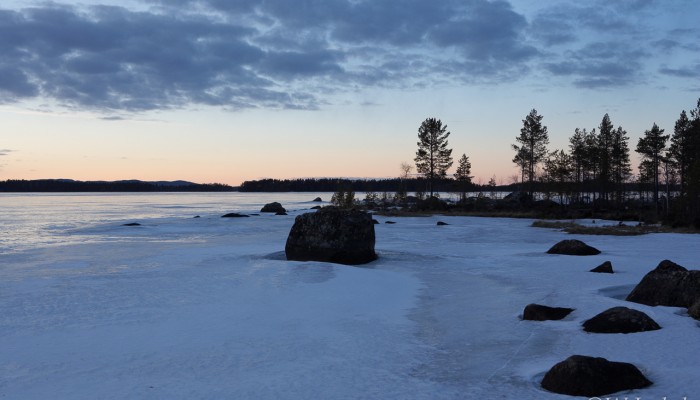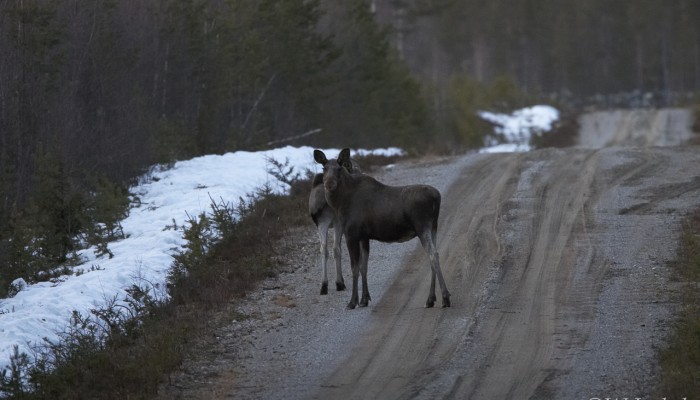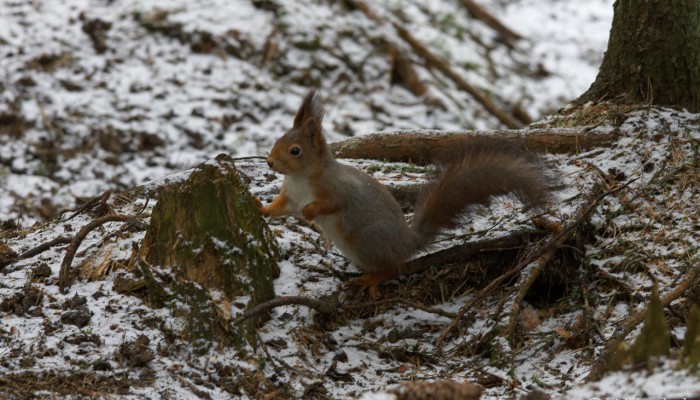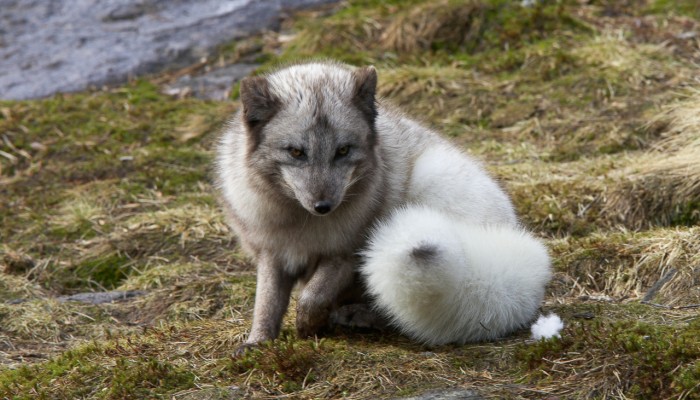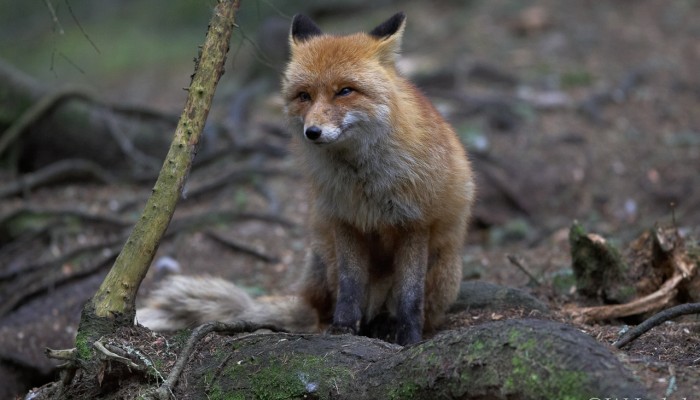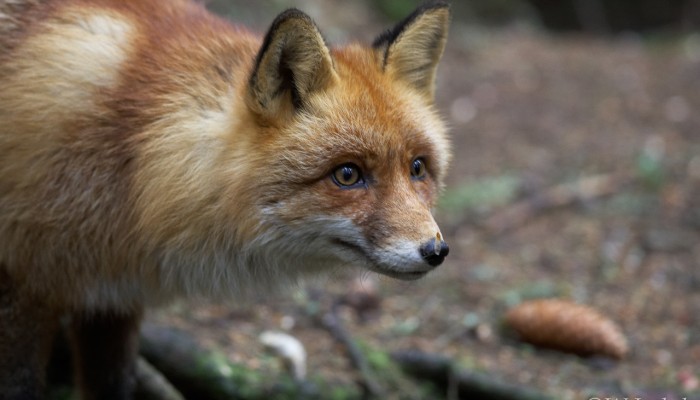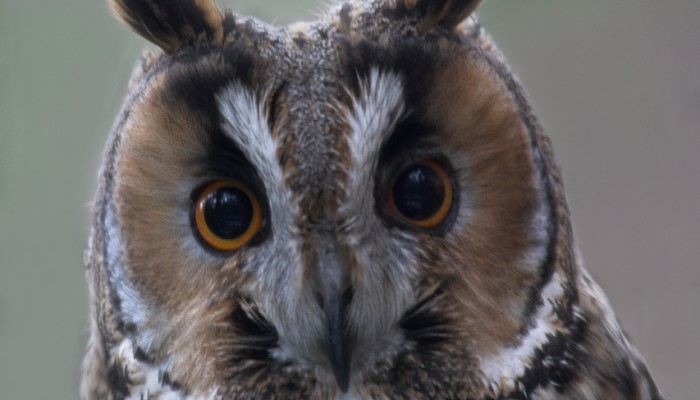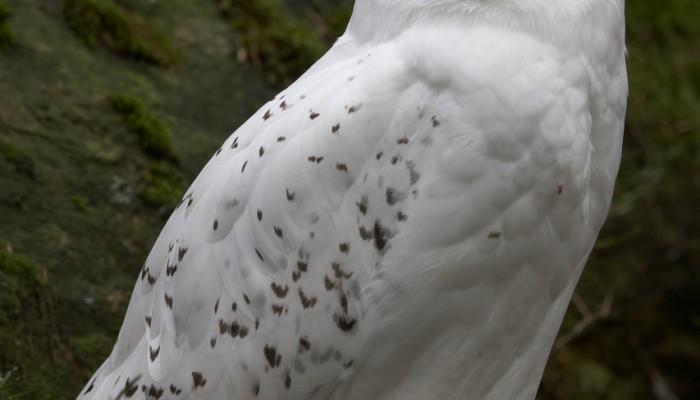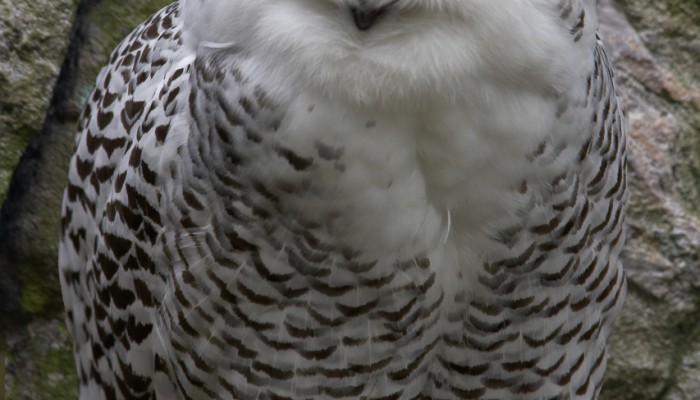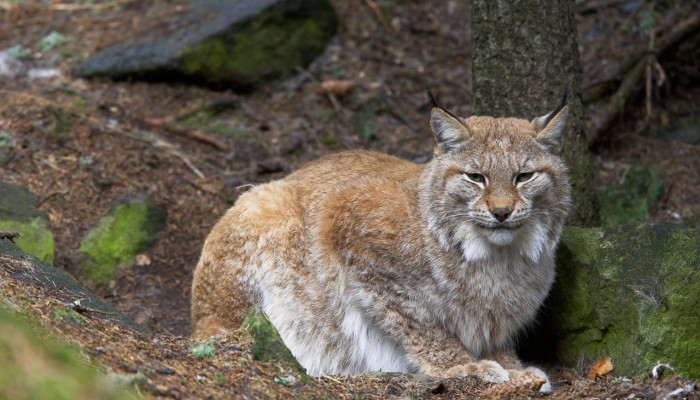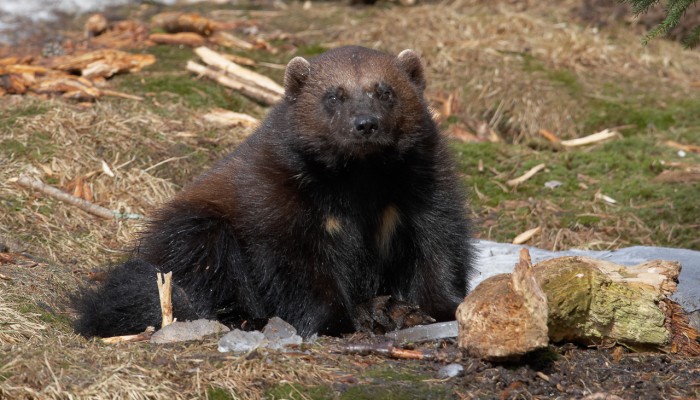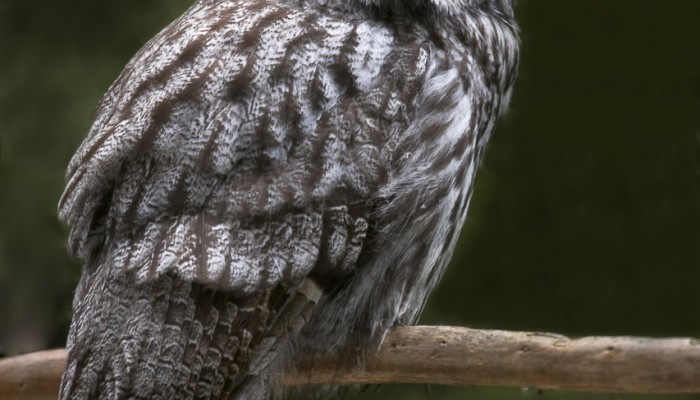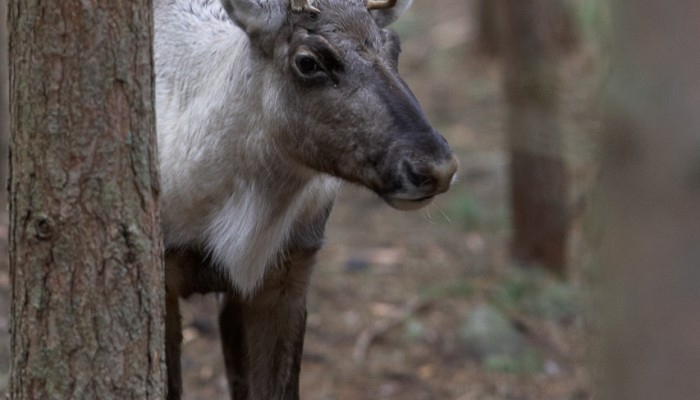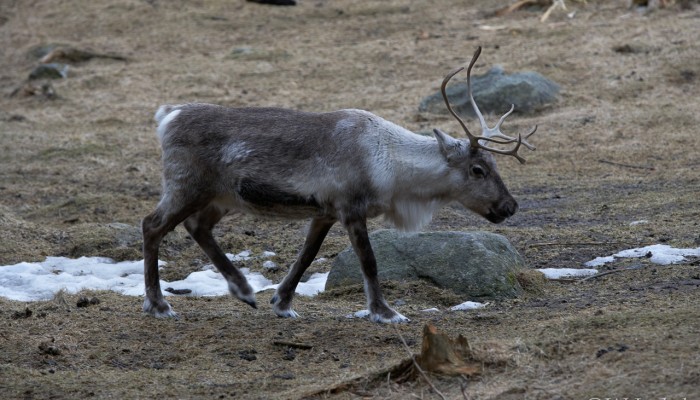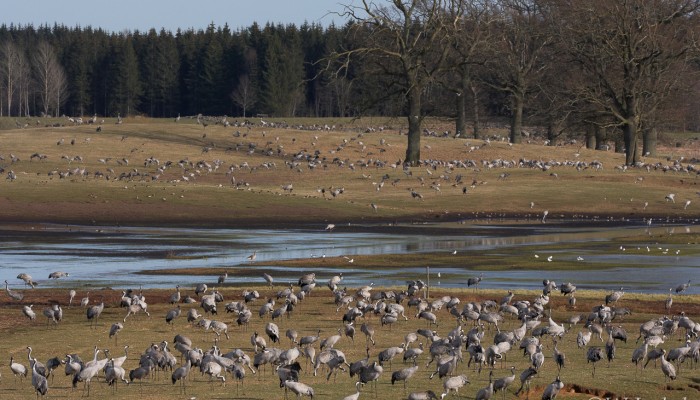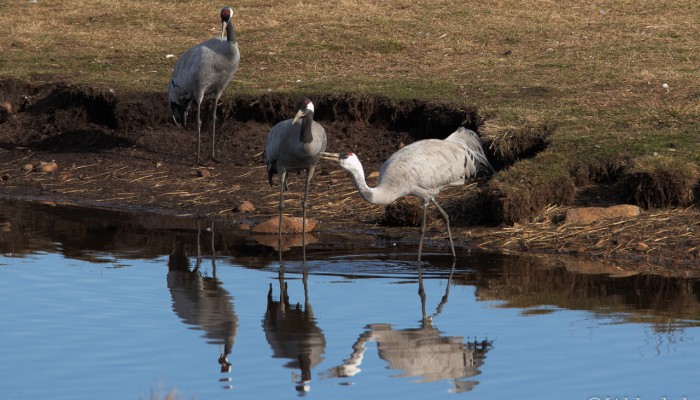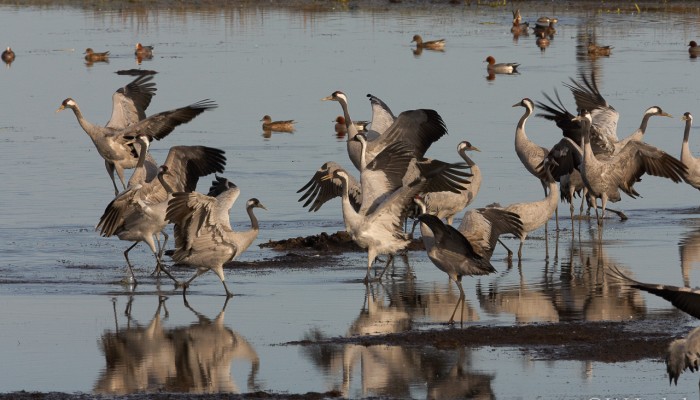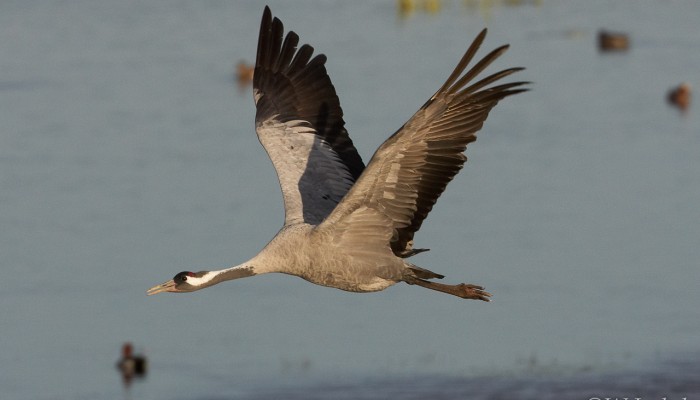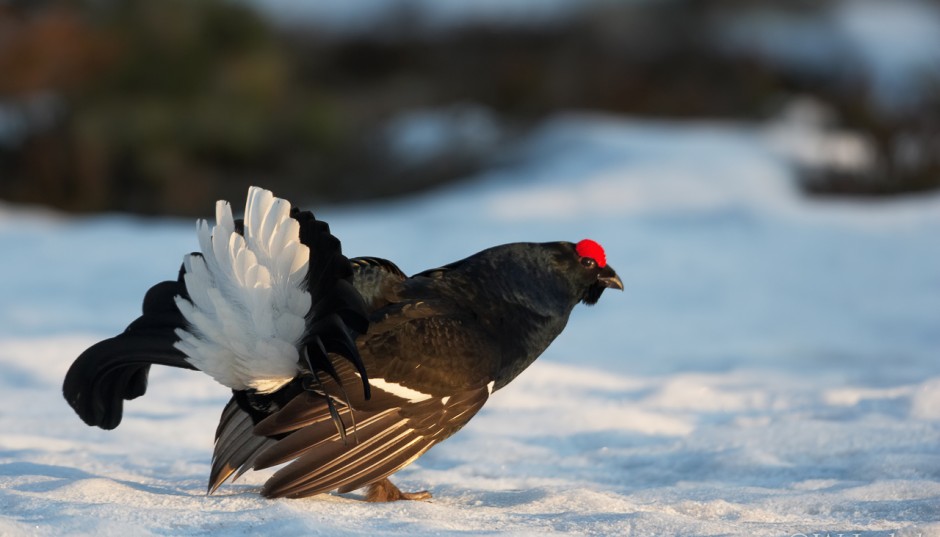
Located between Mora and Sveg in Orsa Finmark, Hamra National Park with its size of only 28 hectares (0,3 square kilometres) is the smallest national park of Sweden. It was founded in 1909 and forms a pretty untouched oasis of forest in the midst of a managed area, – with wind-fallen trees, snags, vast amounts of beard lichens, boulders and a small lake (“tarn”). Some firs are over 300 years old. The landscape is shaped by two low moraine hills. Apart from its richly varied insect life which counts about 450 species of beetles, the park is not known for a great variety of wildlife. However, when I was there in April 2007, it was a great experience photographing the early morning displays of the male black grouse (blackcocks) as well as taking pictures of cranes, barnacle geese, whooper swans and various species of ducks in this beautiful unaffected and silent nature. I stayed with a German couple who lives in the area for a long time and is well known to the community of professional and amateur nature photographers for their great hospitality and knowledge. They’re organizing trips in the park, providing several watch shelters and huts for photography. We went to the locations (‘leks”) early before dawn so that we could watch and photograph the arising activity of the birds. Unfortunately I had to leave before the mating season of the shy capercaillie but I surely will return to this amazing place once again. We also visited the well-known Järvzoo in Järvsö, which has a large collection of Nordic animals, including the four major carnivores of Sweden: the wolf, bear, lynx and the wolverine. However, at this time of the year, the bears were not yet active. On the way back, we stopped at Hornborga Lake which is located between the two large lakes Vänern and Vättern north of Gothemborg and which is famous for the cranes dancing spectacle yearly taking place in April. Around 8000 to 10000 cranes are gathering here every day to dance and mate before leaving for their final summer destination further north in Norway and Sweden.
The wildlife shots were taken with the 600mm/f4.0 IS, 400mm II/f2.8 and 300mm/f2.8 IS tele lenses on Canon 1D Mark II/ 1Ds Mark II cameras. If necessary, the 1,4x or 2x converter was used additionally. For capturing landscapes, I went with the 24-105mm/f4.0 IS, 24-70mm/f2.8, 70-200mm/f2.8 IS and 35mm/f1.4 lenses.

